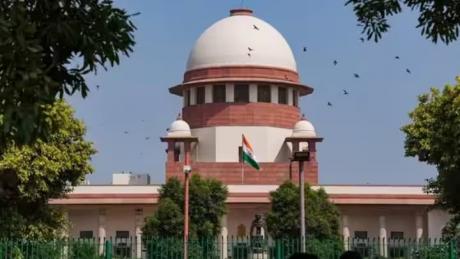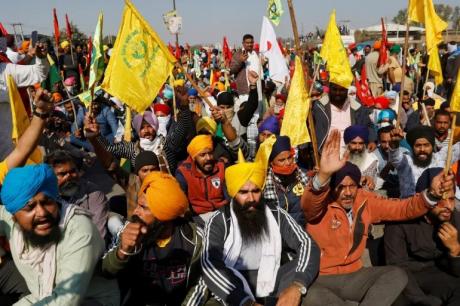Taliban is back in the global limelight as the extremist group has regained control of the country that it has once ruled. In what has been spelt as the botched decision from US President Joe Biden to withdraw the troops from Afghanistan, the drawdown of forces from Afghan soil has played a major role in the Taliban's resurgence as the more the troops left the country, the more the Taliban fighters advanced to take over the reign.
As the world is witnessing shocking and heartwrenching events that are getting unfolded from Afghanistan, the Taliban is relishing that the group is back to reign after 20 years. The stage is set for the power transition where the guard of ruling the country now goes to the extremist group, the Taliban has issued a statement that it would soon change the country's name as how it was during its five-year rule between 1996-2001. The fate and future of Afghanistan would once again go for a modification as its past. With the Taliban has taken over the reign, the country would be called the "Islamic Emirate of Afghanistan". And we can't expect any form of peace from the group other than its own version. While the Taliban would take the country to twenty years back, let's take a look at how the Taliban rule looked like between 1996 to 2001.
Islamic Emirate of Afghanistan was founded by Mullah Mohammed Omar and he was ruling Afghanistan for these five years. He was the supreme leader of the Taliban from its inception in 1994 to April 2013. He died on April 23, 2013, in Zabul, Afghanistan. However, his death was kept secret for two years and in 2015, the Afghan government has publicly announced that Mohammed Omar has died in 2013 due to tuberculosis. In the Taliban's reign from 1996 to 2001, Afghanistan had become the camp and haven for the terrorists beyond its national border as the Taliban had resurrected its affiliates and invoked draconian laws from banning education for women and closing the borders for the technological era. The scar that they left during their five-year rule was being reminisced currently by the globe that Afghanistan would witness conservative governance and Taliban will structure its regime to rule the country forever by countering its adversaries within and beyond the borders. According to the Washington Post, in their last rule, the Taliban had concentrated power within a tight circle of former rebels who had helped to oust the Soviet forces in the 1980s.
Initially, the civilians had also backed the Taliban regime after the group had eliminated corruption and constructed roads. However, it has led the government by strict implementation of sharia law and executed violence and authoritarianism and welcomed the terrorists from other countries and demolished the free and fair conduct of living. The first emirate was launched in 1996, shortly after the Taliban had captured Kabul for the first time. In September 1996, the insurgents had tortured and killed former Afghan president Mohammad Najibullah Ahmadzai and then hanged his body on a traffic post. In a short period of time, the Taliban began unfolding their won face to the Afghans.
They have ordered men to grow beards while women were mandated to wear burqas and garments that cover the entire face and body. Education was banned for girls and women would brutally be beaten if found at public places unaccompanied. Besides religious chants, all other forms of music were banned along with soccer and the Taliban government had held public executions in Kabul's Ghazi stadium. These scenes had greatly isolated Afghans from the rest of the world and there were also incidents where women were pushed into slavery. Under the Taliban's rule from 1996 to 2001, Afghanistan was like a forbidden country and there were photos of children dying of preventable illnesses in a hospital and the Taliban had destroyed the statues of Lord Buddha.
As their atrocities have grown in the country, hundreds of thousands of people had displaced from the country. On the other side, the Taliban had displayed to enshrine the international laws, though there wasn't a full precipice. The regime had tried to send a diplomat to the United Nations General Assembly. In October 1996, Taliban leader Mohammed Omar has sent a letter to US Representatives in which he claimed that the group want to establish good relations with the US, as the US was a major player that watered the rise of the Taliban to counter Russia's invasion of Afghanistan.
Under its rule, the Taliban had established ministries of health, commerce, and intelligence. Amid attempting to make a contact with the foreign leaders, the Taliban had built a caliphate in Afghanistan by suppressing the rights and liberties and in 1998, the United Nations envoy Lakhdar Brahimi met with Mohammed Omar to talk about humanitarian access. However, with the flawed human rights record and increasing violence, the Taliban's efforts to establish diplomacy were thwarted by the countries. Taliban founder Omar's disciples had burned entire villages and targeted Afghanistan's minority in its deadliest military campaigns. Under the Taliban's regime, the entire landscape of Afghanistan had changed like how the dusty soil would blow off by the storm.
In countering Russia's invasion against Afghanistan, the United States had watered the growth of rebels and while one being the Taliban, the other being the al Qaeda. The flow of both the militants was precise and they developed a relationship both economically and geographically and it was in a way that Osama Bin Laden had funded the Taliban's Omar to construct a new palace after the latter's house in Kandahar was destroyed in a bomb blast. The Post says that by 1998, Bin Laden had begun offering interviews to foreign media from his compound in southern Afghanistan. It was three years ahead of the fall of the Taliban. Laden was then accused of attacking US embassies in Kenya and Tanzania in 1998 post which the Bill Clinton administration had fired missiles at Laden's safe haven.
When the Taliban regime had attempted to seek international aid, Bin Laden's al Qaeda had attacked and bombed down the Twin Tower in New York City on September 11, 2001, prompting the United States to invade Afghanistan and declare war against the Taliban for providing safe haven for Bin Laden and al Qaeda. The United States had camped on Afghan soil and in December 2001, it has ousted the Taliban regime from Afghanistan and went on to establish a people's elected government in the country. The extremist group had waited for two decades for the reign and it has formed shadow governors across the country to work against the US and NATO-backed Afghan government.
After the US had withdrawn its forces completely, the Taliban had rapidly risen and on Sunday, the group had fully captured the country including its capital Kabul. The unprecedented advancement had dismayed the people as the reports say that the Taliban would more vigorously enact the government akin to its first five-year regime two decades ago. Many fear that the Taliban would unfold two decades of gains by women and ethnic minorities while curbing the work of journalists and community organizations. After the Taliban had taken over control, many young men had rushed to their homes and changed their attire from jeans and t-shirts to the traditional shalwar kameez outfit as they are going to live in the Taliban's world and their rule of law.
The Afghans fear of Taliban's version of peace and of losing contacts with the outside world wherein a lot has changed in twenty years and the dream of juveniles in playing football and listening to music could be busted, if not now, it will, however. Women who were getting ready to pursue their education at the varsities would be confined inside the home as there is something more dangerous than the Covid-19 pandemic. The community organizations would be shut, so are the places that resemble the western world. The Taliban would enhance its regional power with the support of neighbouring countries like Pakistan and China and would greatly become an adversary of peace in Asia and beyond.









Comments